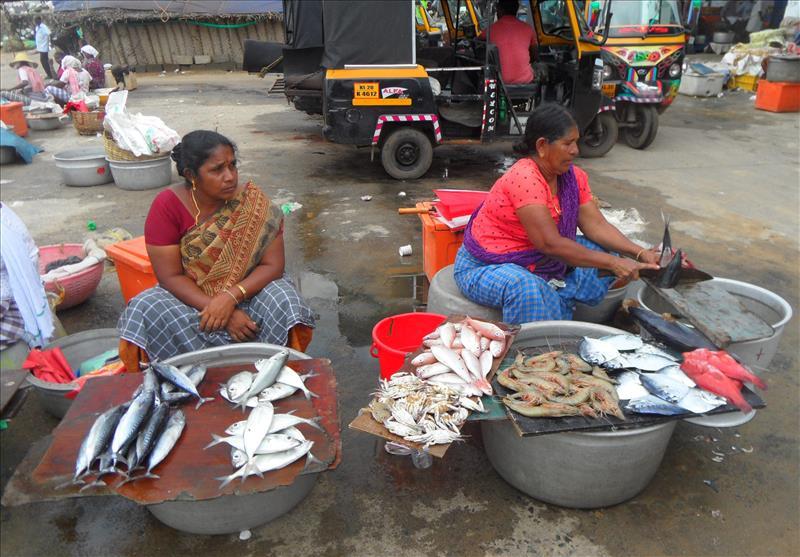Cyclone in Kovalam and Vizhinjam Fishing Village. Continuing our 2 week guide to Kerala.
It started raining and the sea got rough… the forecast was worse up and down the coast and the bad weather was set to stay for several days.
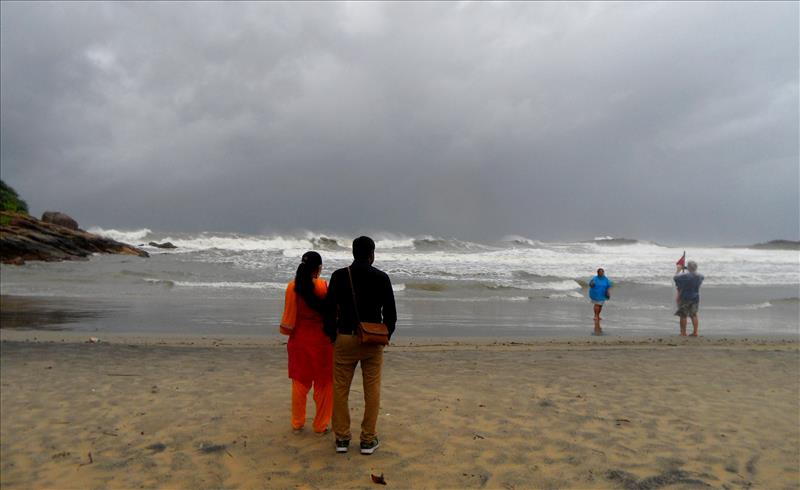
Lighthouse Beach
I planned to stay in Kovalam for two days and got stranded for a week as a freak cyclone hit the region! Checking the weather forecast, Juan saw the storm alert – the depression showed over a huge area of South East Asia, including countries we could possibly get a quick flight out to, such as Sri Lanka or The Maldives. There was no point in going inland to the Western Ghats highlands to see the wildlife park at Thekkady or the Munnar tea plantations in the torrential rain. So we decided to stay put in Lighthouse Beach at Kovalam, it was certainly an experience!
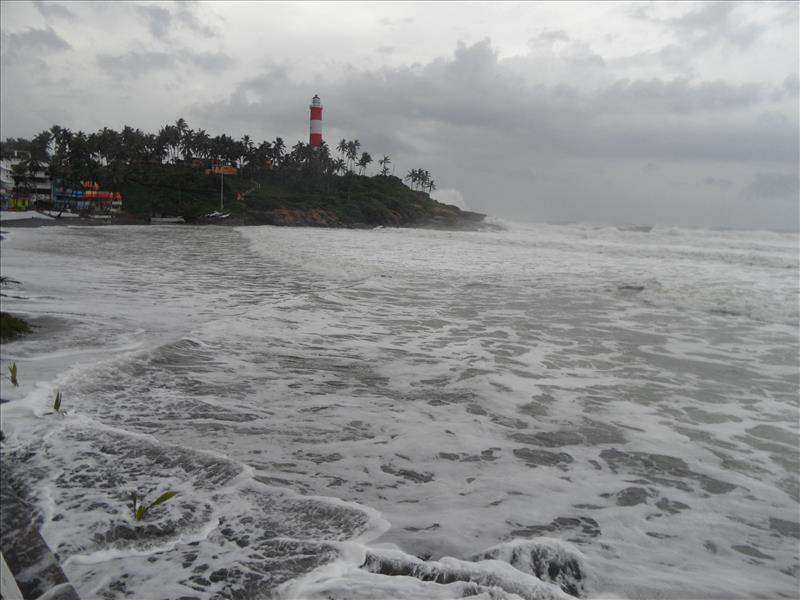
The cyclone hit Cape Kanyakumari with full force, devastating the place where I’d planned to go next the most southern part of the Indian subcontinent. Hundreds of people were evacuated from the area and there were several deaths. Trivandrum capital just 20 km away from Kovalam was badly affected too, trains were cancelled, flights diverted and trees fell down crushing cars. Northwards up the Keralan coast, Alleppey and Cochin our subsequent destinations were also worse off.
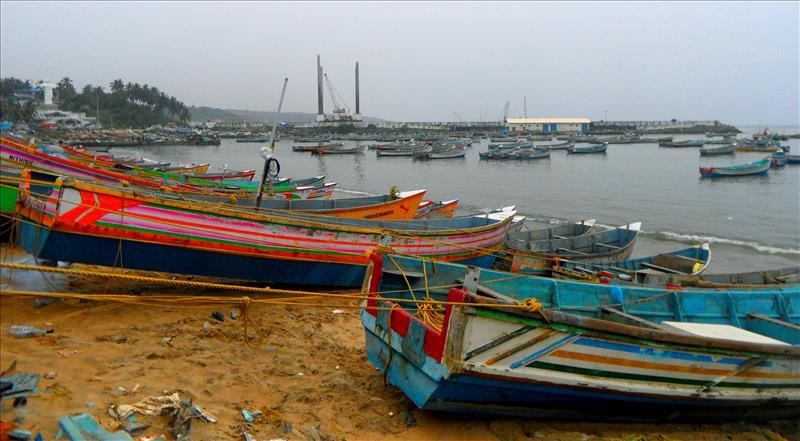
Typical fishing boats, Vizhinjam Village
On our first night in Kovalam there were dozens of fishing lights out to sea, on the second I only saw one and thought how desperate the fishermen must be to go out in the storm. Overnight it rained heavily and the ground floor of the hostel flooded…Juan and I were ok in our room on the first floor, but had no electricity for three days and there was no internet to let our families know we were alright. The water was knee-deep to get in and out but it wasn’t cold so we wore shorts and plastic sandals. The guests in the building in front called out and said they didn’t have tap water either, our receptionist had the foresight to fill up the tanks and he also gave us one candle! Fortunately the head-torch from our Nepal trek was in my backpack. The frontline restaurants had generators so meals were not a problem but I only ate vegetarian food to be on the safe side. The power cut affected several provinces.
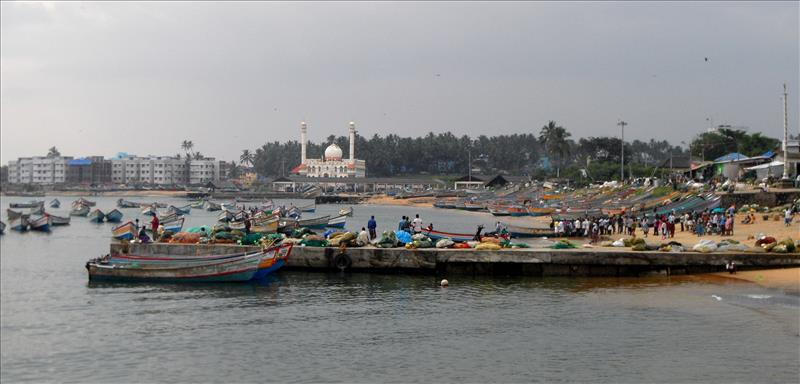
A coastguard ship was out in mountainous seas off Lighthouse beach searching for the lost fishing boat… we also heard that some 80 small boats from Trivandrum were missing, swept out to sea and 1,700 kilometres up the coast to Mumbai where they were miraculously rescued a few days later.
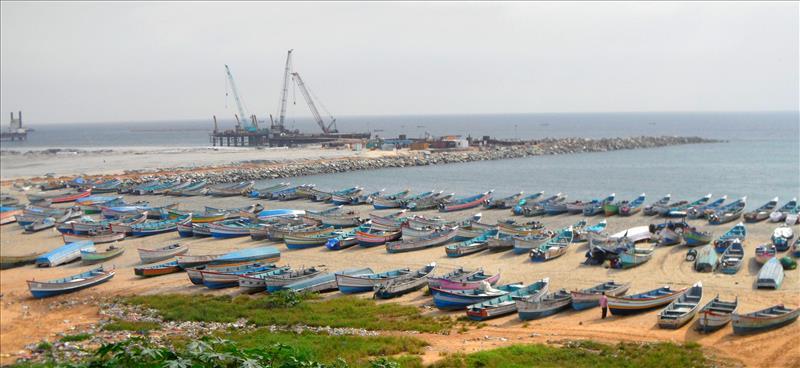
The weather wasn’t bad all the time though. I had come to Kovalam to relax in the sun and swim but ended up walking a lot!
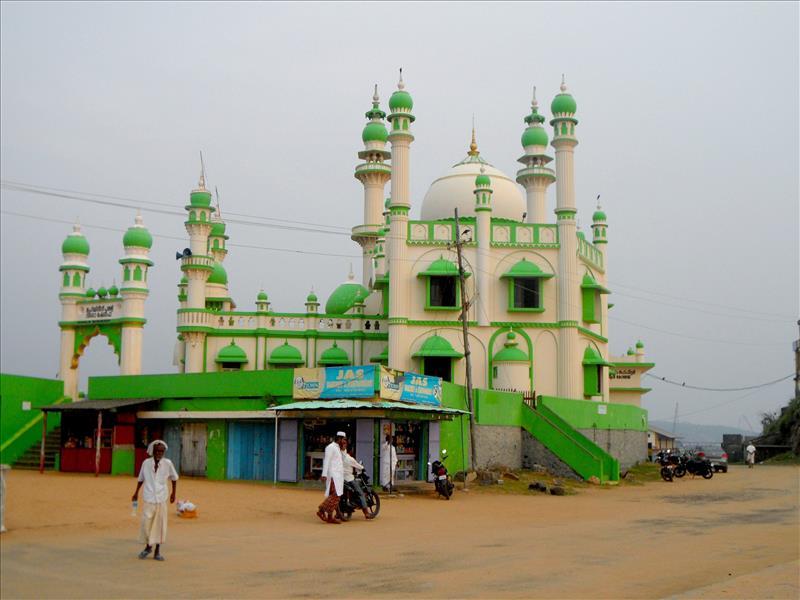
Juan and I walked southwards, past the lighthouse and over a hill to the fishing village. For some reason Indians put music and religious chants on big loud speakers at deafening volume which can be heard from miles around, there were two on this dusty street in rivalry. Vizhinjam is divided into three distinct sections, down in the bay and up the surrounding hillsides – this was evidently the Moslem district, the women and girls with their heads covered, the men and boys in white robes, and at least three big mosques overlooking the port and hundreds of fishing boats. Smiling ladies called out in greeting from their doorsteps as we went down the lane towards the docks. I doubt tourists come this way. The fishermen kept busy with their daily routine, fiddling with decrepit outboard engines and mending endless nets, with small booths selling fishing tackle bits and bobs.
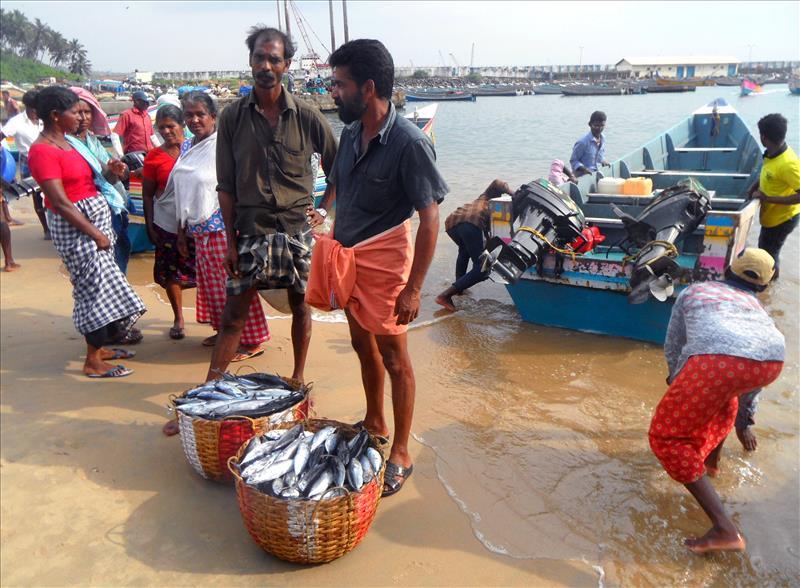
Vizhinjam’s roots can be traced back to the Ay Dynasty (850 AC), Persian traders later came across the Arabian Sea bringing their culture and religious beliefs, followed by Dutch and Portuguese settlers in colonial times.
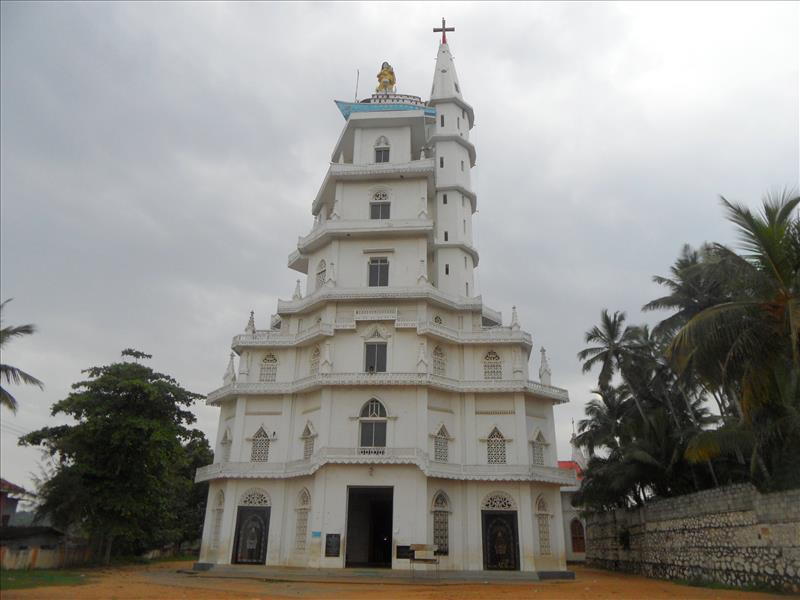
The Christian fishermen and their families live further along the bay between the old St. Mary’s Church directly behind the quay and the magnificent Christ the Redeemer pointing to the Our Lady of Good Voyage Church crowning the next hill. The way up is one of the poorest districts I have ever seen, the people live in abject misery in hovels over open sewers, one tap in the ‘plaza’ the only water source for the neighbours to share.
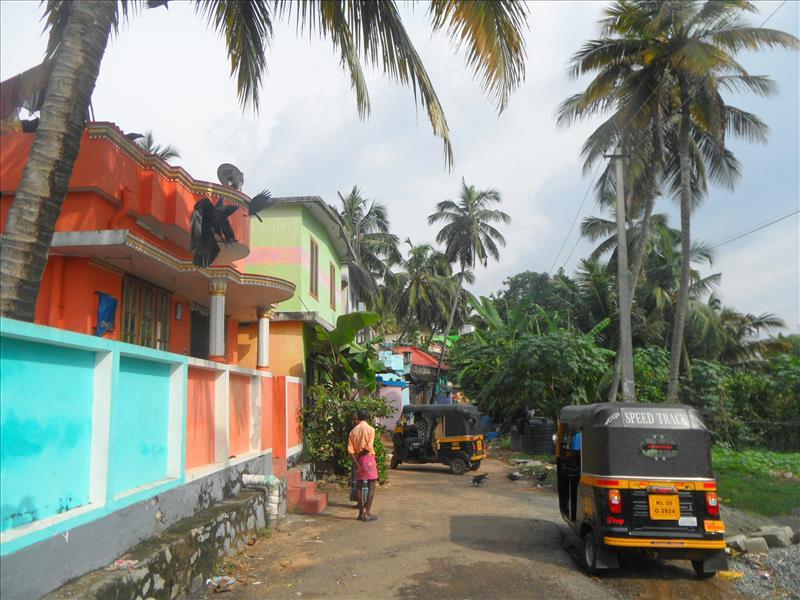
The busy town centre is further back, up behind the fishing village near the main highway that runs south. More developed with commerce and shops, and various temples, this is where the local Hindus live in generally better conditions. I saw the sign to an ancient rock temple, which is actually a small but remarkable shrine cut into a boulder.
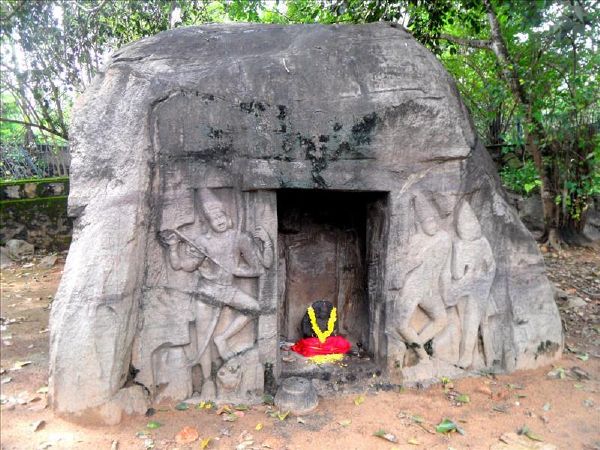
We walked back towards the harbour a different way, down a tree lined lane with stylish villas, and along past a river where women were doing their laundry in filthy water – they laughingly called me down to help them. Men were bathing downstream…in India I see people constantly washing, trying to keep clean but the environment is polluted with rubbish and effluence so it must be very frustrating.
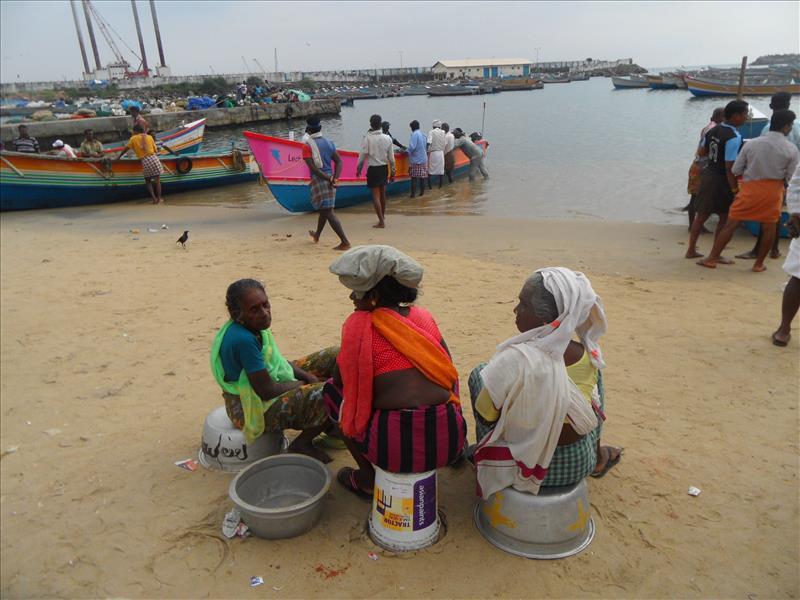
When the cyclone was over and the sea calmer, I watched the fishing boats coming to shore with their day’s catch, small colourfully painted outrigger wooden boats with two men aboard each. The fish was auctioned directly on the beach in Vizhinjam fishing village, notes changed hands and porters carried the buckets of fish away on their heads to waiting vans and the seafront restaurants at Kovalam.
